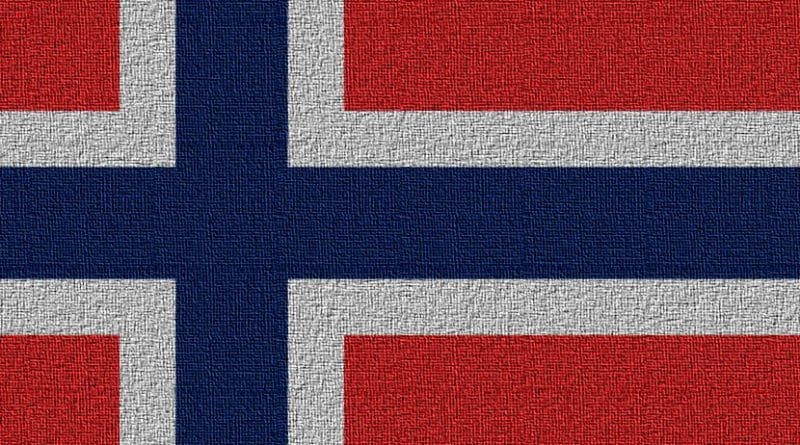Norway Terror: The Power Of One? – Analysis
The Norwegian police have authoritatively dismissed the involvement of the Jihadi outfits in the July 22 explosion in Oslo city centre, which killed seven people and the subsequent shoot out at an annual summer camp in Utoeya, an island at Oslo’s outskirts, which killed 84 people. Police have dismissed the hoax claim of responsibility issued by an Islamist outfit and charged a lone Norwegian national of involvement in both these incidents. The toll at the island shootout may rise further as divers are still searching for bodies in the waters around the island.
Obviously, the conclusions of the police has been backed by the arrest of the 32-year old Norwegian national Anders Behring Breivik, described to be a far rightwing activist with a Christaian fundamentalist outlook. His Facebook and Twitter accounts have not revealed any anti-Islamic outlook. Breivik is being tried under Norway’s anti-terrorism laws, maximum punishment under which is said to be 21 years imprisonment.
 His interrogation in due course will provide answers to several critical questions like the following:
His interrogation in due course will provide answers to several critical questions like the following:
Whether the twin attacks involved just Breivik and nobody else? Was Breivik being supported by any far-right group in the country? What sort of indirect support mechanism was available to Breivik as he planned and executed the attack to perfection? How did his elaborate planning and assemblage of explosives and weapons manage to go unnoticed by the law enforcement agencies?
If Breivik is found to have acted on his own, the incidents herald the terror orchestrating capacity of a lone terrorist vis-à-vis the lethality of an organized terror outfit like Al Qaeda and lead one to the conclusion that a self-radicalized (assuming that Breivik was) individual can inflict far more damages than the established terror outfits.
The incident has revealed that few guns in the possession of Breivik did inflict fatalities far larger than his orchestration of a copybook terrorist car bomb explosion using a remote device. This poses fresh challenges to the anti-terror capacities of the states.
Breivik appears to have learnt his lessons both from the Oklahoma city bombing of 1995 and the recurrent shoot outs in schools that take place in several countries including the US and combined them to lethal perfection. In the 1995 attack on the Oklahoma city, Timothy McVeigh, an American militia movement sympathizer, with the help of a handful of co-conspirators had detonated an explosive-filled Ryder truck in front of the Alfred P. Murrah Federal Building in downtown Oklahoma killing 168 people.
However, to dismiss Breivik as a deranged isolated individual and the attacks as one off incidents would be a serious mistake. Breivik and his possible co-conspirators (if any) are products of a belief system that has some following in Norway and other European countries. This makes the scenario of recurrence of such attacks a valid one.
Irrespective of the negative impact of the incident on the political prospects of the far rightwing parties in Norway, current economic hardships would keep the anti-Muslim and anti-immigrant bigotry of far right groups alive.
Moreover, if the unrest sweeping across the Arab world and North Africa in particular ends up creating a large displaced population and pushes them into Europe, right wing extremism and consequent terrorism would gain a fresh lease of life by articulating more widespread public apprehension about such Muslim immigration.
The gunman simply parked the car in front of the government buildings and this remained unnoticed for several hours, giving him enough time to reach the island and go on a killing spree. Martin Jay in his column July 22 “Terrorists can also be blond, blue-eyed men” in Al Arabiya was bang on target when he wrote “Norway has laid itself open to a Timothy McVeigh character who I suspect made the car bomb himself and detonated it at a distance with a mobile phone.”
In Utoya island, Breivik went on a firing spree for over an hour in the island, choosing his victims at will, injuring and then killing them with shots on their heads, before the police arrived to confront and arrest him. This poses serious questions on the existing abilities of the police force to respond urgently and efficiently to multi-location terror strikes.
Critically, the vulnerabilities of Norway’s open society were exploited to the hilt by Breivik. There is absolutely no reason that the same, left un-mended, would not be exploited by an organised terrorist outfit like Al Qaeda in future.
This necessitates a drastic reform in the way Norway postures on issues of conflict and terrorism. A specialist in playing a mediating role in world wide terrorism, this nation needs to do a little inward looking to discover the loopholes that allowed a lone radicalized man to inflict a horror of this proportion.
It is time that the Peace Research Institute Oslo (PRIO), known for its research findings and recommendations to end insurgency/terrorism in other countries through peaceful means, by promoting ideals like self-determination to take precedence over state sovereignty and also negotiation with terrorists as a conflict resolution technique, spend time and resources on how to mitigate the divisions and emerging radicalization within the Norwegian society.
Norway has two models to choose from to firm up an effective counter-terrorism mechanism — Indian and American. India has consistently allowed political lethargy, bureaucratic inertia and inter-departmental rivalry to undermine its anti-terror capacities, even after numerous terror strikes. On the other hand, the US has managed to keep its homeland terror free since 9/11 attacks. Most of the US citizens aren’t exactly perturbed about the so-called loss of individual freedom, as long as they are safe from the reach of the terrorists.
Published at Al Arabiya and reprinted with permission

